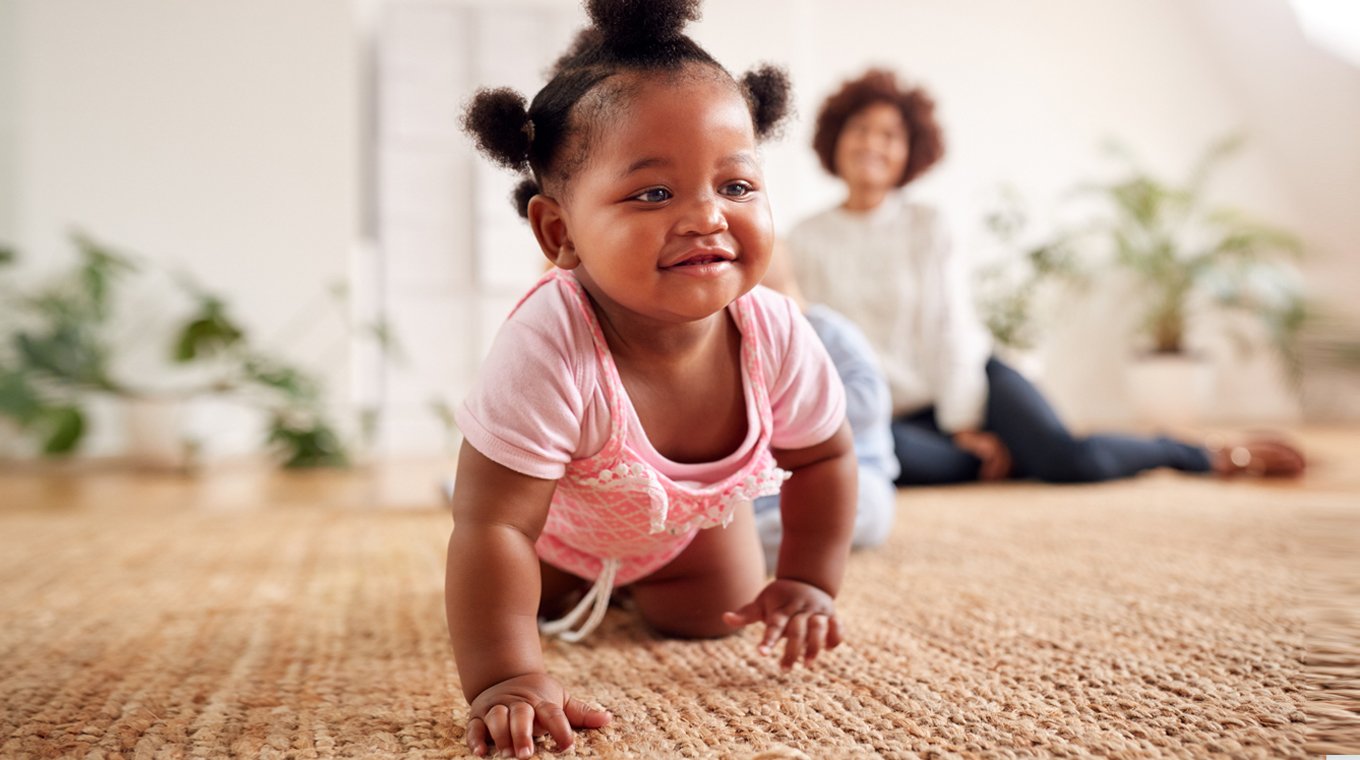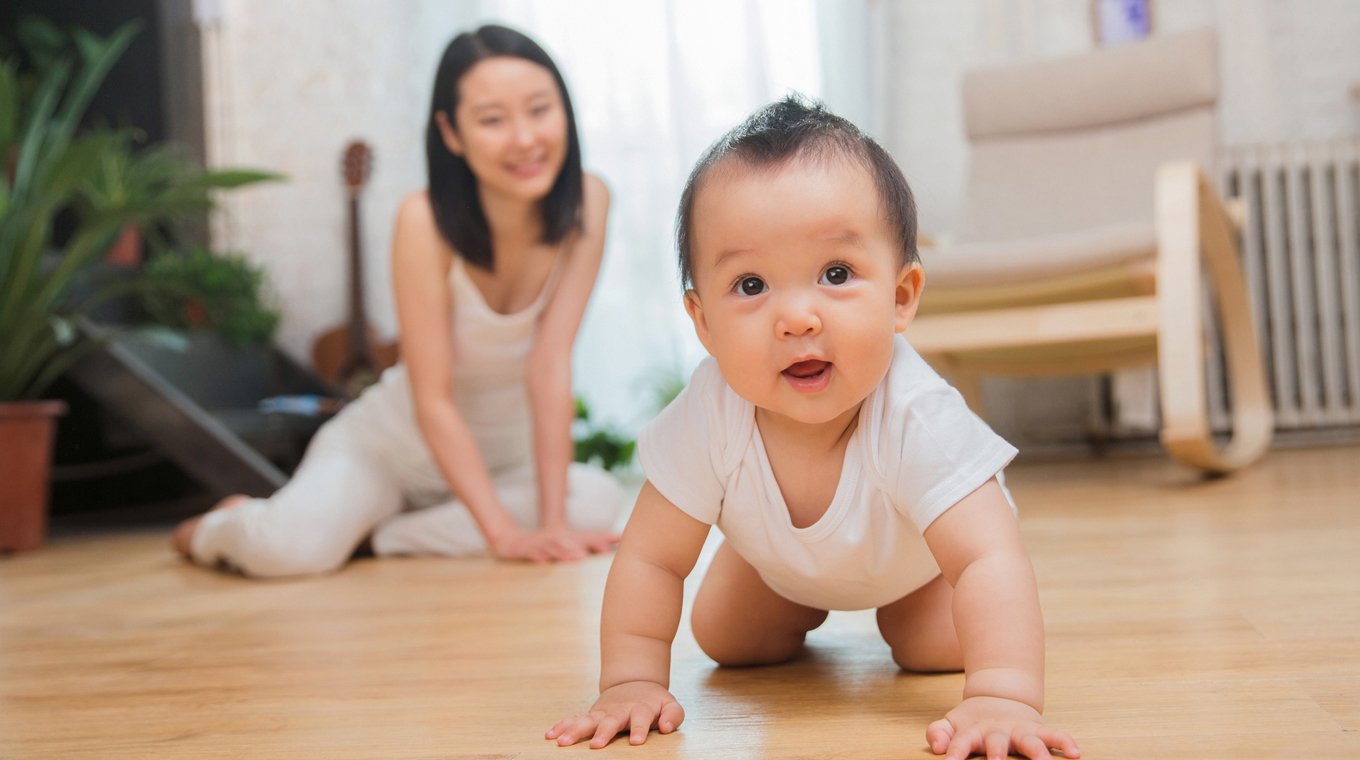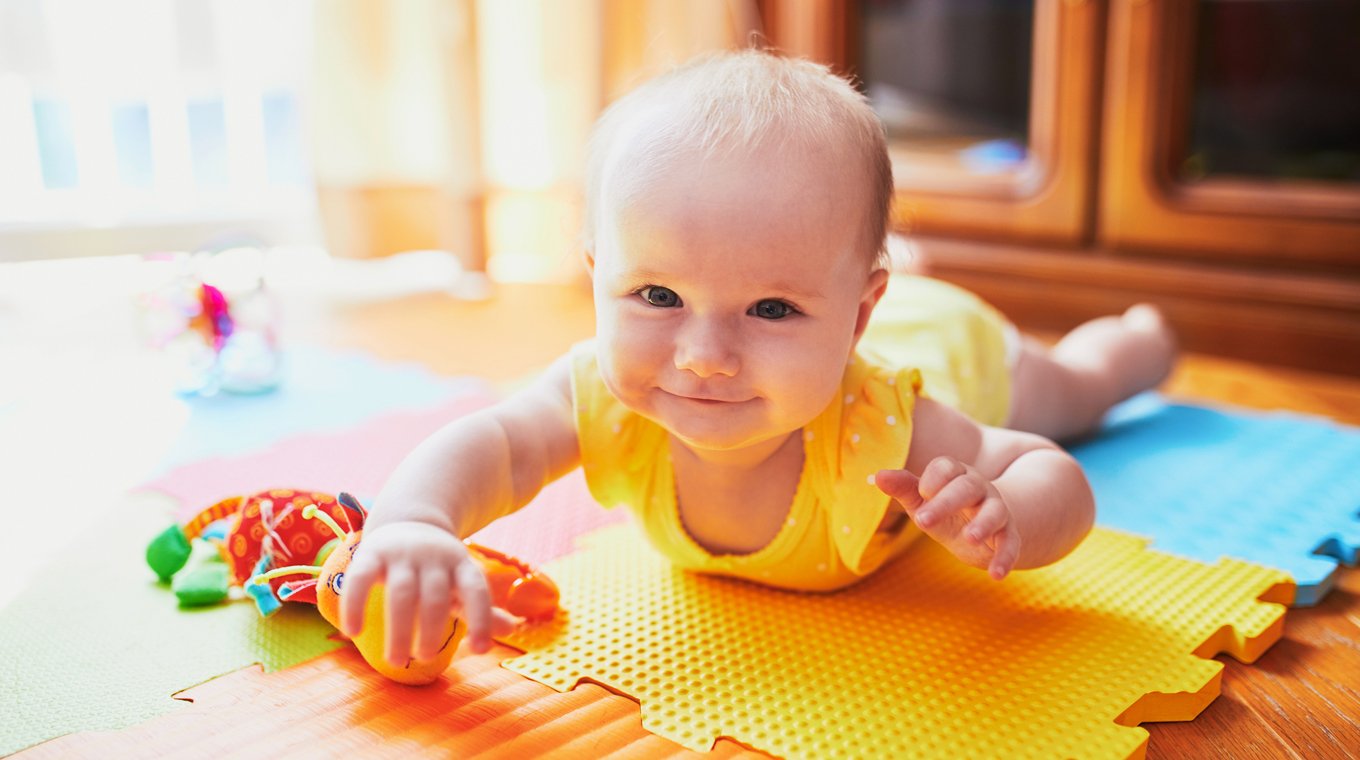IN THIS ARTICLE
Milestones happen quickly during the first year of a baby’s life. Littles adapt to their surroundings so quickly that it is always a must to keep one’s camera ready>; any milestone reached is a cause for celebration. From your baby’s first smile to their giggle to their ability to sit up on their own, the first year holds amazing feats.
And before one of the biggest events of their young lives occurs — their first steps — they will probably conquer crawling first. Mom Sara W. expressed how freeing the accomplishment was for her and her baby. "Everyone says you will hate when they start moving on their own, but I loved it. You want that bottle? Go get it!" she previously told Mom.com.
Before your little one begins zipping across the living room floor, here are some tips for helping them learn to crawl.
At what age do babies start crawling?

Babies begin crawling anywhere between 6 to 11 months. Prior to that, they are getting ready for it by sitting up around 2 months and rolling over around 4 months.
And all of this strength training begins with tummy time. Tummy time is the key to getting your baby ready for many physical-based milestones. According to Parent Science, the muscles that babies strengthen in their core and neck during this activity enables them to begin making significant gains in their development.
What happens if my baby isn’t crawling yet?
There is no need for concern. With no conclusive evidence that developmental issues occur when a baby dooes not crawl, the Centers for Disease Control and the American Academy of Pediatrics have removed crawling as a milestone. If your little one has been developing just fine in every other way, then continue encouraging him through floor activities.
However, if you have noticed that there have been multiple developmental stages missed, then it might be time to check in with your pediatrician to see if there is a need for concern. The MayoClinc advises to watch if your baby struggles to lift both legs, continously needs help standing, cannot do hand gestures or point to objects, and struggles with trying to say "mama" or "dada."
Signs that baby is ready to crawl

As you happily await your little one to move her way across the floor, there are some telling signs that will let you know when she is ready. Pediatric resource center Pathways breaks down the movements to watch for:
- A baby’s arms and legs are engaged to push her body up.
- Instead of just sitting, babies move into a crawling position.
- To move forward, babies use their arms.
- Moves into a slight crawling position with one leg bent.
- If a toy is too far out of reach, babies roll across the room to get it.
- Rocking back and forth on their hands and knees.
How to help your baby crawl

Motivation can help your baby go from rocking to crawling! “As a pediatric occupational therapist, I cannot stress how important motivation is. Motivation is key to your little one participating and repeating skills necessary to build those bigger skills to meet those milestones,” expressed pediatric obstetrician therapist, Nekole Amber, in her vlog.
Whether your baby is reluctant or willing, making the per-crawling stage fun and enjoyable is the key to making the transition from rocking to crawling with ease.
Here are some of the top tips from mom and Lamaze certified Childbirth Educator, Bridget Teyler, on how to get your little one crawling:
1. Tummy time
Tummy time allows babies to build up their core, support their heads, and strengthen their arms. If your baby dislikes tummy time, then as Bridget suggests, use a birth ball.
2. Floor mirror
Babies love mirrors and they can act as a great distraction for babies who need some encouragement to play while on their bellies. So, build their curiosity by having them look at themselves while strengthening their crawling muscles.
3. Use tunnels!
Floor tunnels provide a fun obstacle course for little ones to crawl through. Placing some of their favorite toys in parts of the tunnel will give them the extra push to crawl through.
4. Keep favored objects slightly out of reach
Place your baby’s precious toys just out of their reach in all directions so that they begin reaching and turning their bodies in order to grab them.
5. Model crawling for your baby
Get down on the ground and show your baby how to crawl on their hands and knees. Babies love it watch mama do something fun and they love to emulate, so start crawling!





